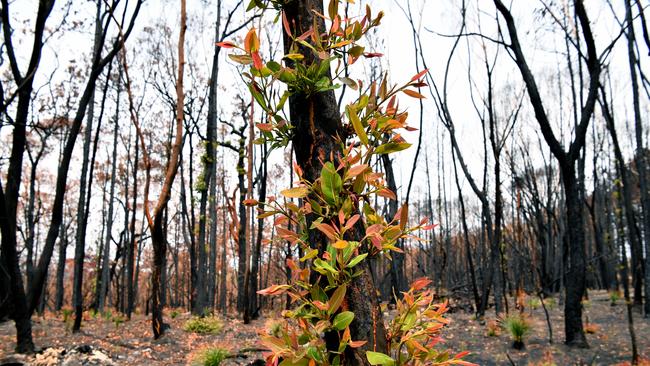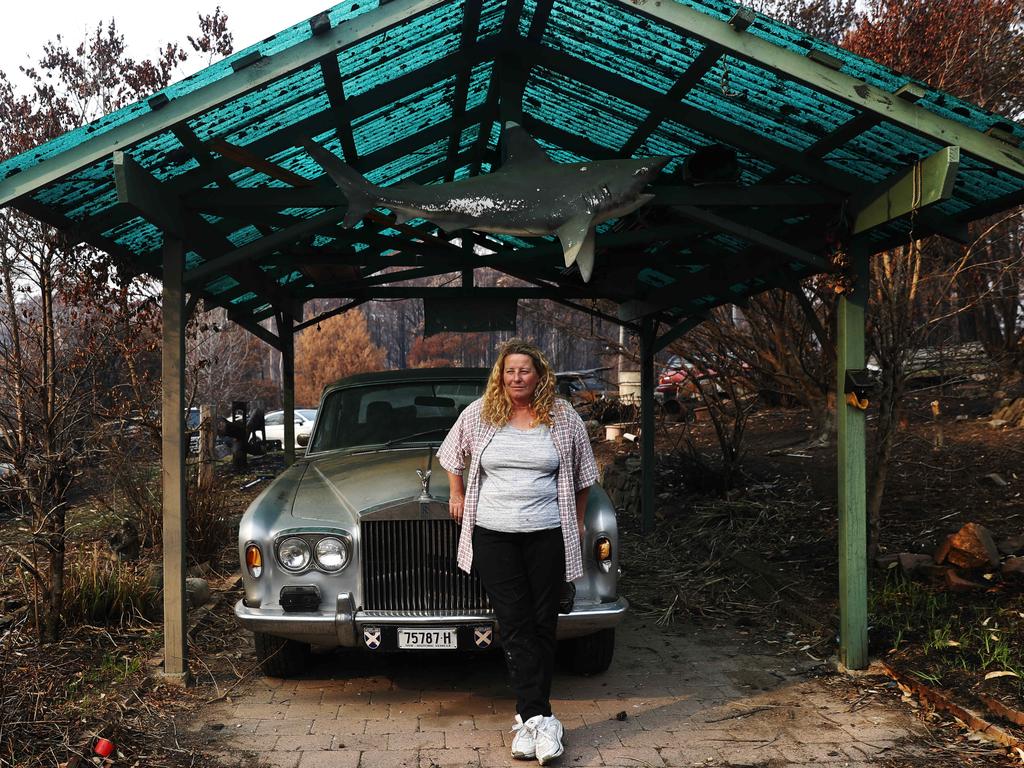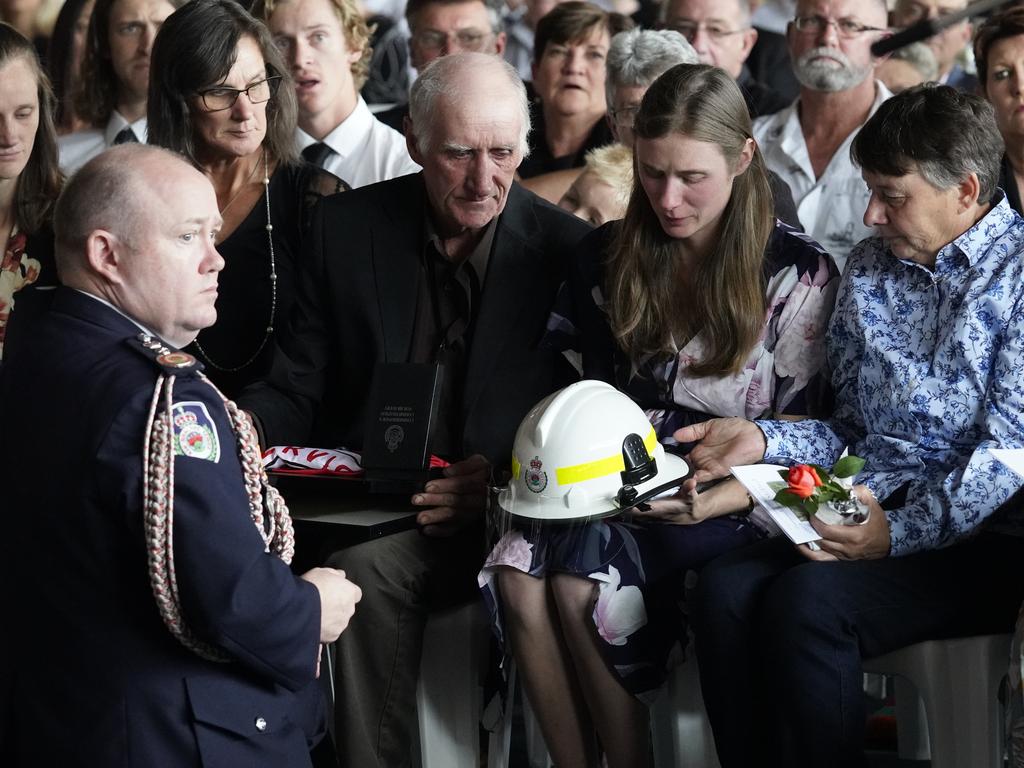Bushfires: Green shoots are sprouting hope of rejuvenation
Bushfire ravaged communities buoyed by ‘sweet-smelling’ air and sight of lush green growth.

Two months after fires claimed six lives and devastated NSW’s mid-north coast, locals rebuilding their homes have been uplifted by the air smelling “sweet again” and the sight of lush green growth emerging from charred trees.
Towns from the Queensland-NSW border down to the greater Sydney region had emergency warnings for fires that threatened roughly a million hectares, in a week that was the first glimpse of the deadly fire season to come.
Forests around the mid-north coast town of Taree were badly affected by two waves of fires from November 8, including at Koorainghat and Khappinghat, which were reduced to ash and the blackened forest bed marked by fallen trees.
While blackened trees remain, green leaves have begun to sprout from tree limbs, standing out in the still landscape.
In the nearby surfing town of Wallabi, resident Melissa Clarke looks for hope in the scattered signs of emerging greenery.
“There are some green sprouts coming from the black trees. The grass has also started to come back a bit. You look at that and see hope in the green, and think it can all become green again,” she said.
Despite the signs of new life, the forests remain largely charred, and Ms Clarke has seen birds and other animals still approaching her home’s greenery, which survived the fires, to feed. “There’s still a lot of trees falling — people are talking about hearing them fall at night,” Ms Clarke said.

Before November’s fires, Ms Clarke would walk her dog through nearby forests and see insects and animals moving between the trees. She is yet to sight any animals on her “very quiet and still” walks through the forest since the fires, but has heard of friends seeing koalas
Ms Clarke said Friday was the first day since November’s fires when the air quality over Wallabi felt normal. “(It) is the first day where the air has smelt sweet again … before this, the heavy dew has made it smell like ash here.”
Further north in Johns River, a town where two people died from the November fires, Craig Noar looks out on to the resurgence of a forest that was burned up to his front yard. “The bush is greening well, with new leaves, grass and ferns,” he said.

Mr Noar said it had rained around his area but he hoped most of it was falling on fires in the south coast and around the state.
Bushfires have burned about five million hectares of land in NSW this fire season.
On Thursday, a handful of national parks in the NSW northern tablelands were reopened, with National Parks and Wildlife Service area manager Aaron Simmon saying authorities would continue to review closures in coming weeks and months in the hope of expanding reopenings.
“We are seeing good signs of recovery throughout the region due to some rain, which has also aided firefighting efforts,” Mr Simmon said.
“We are all hopeful our wonderful waterfalls and rivers will run again soon for all to enjoy.”

The beginning of the bushland rejuvenation comes as the NSW government revealed this week that a stretch of wild Wollemi pines in the state — which have grown since the age of the dinosaurs — survived a “megablaze” that threatened the area.
Specialist teams were winched in via helicopter to ensure the trees had the best possible protection from the more than 500,000ha Gospers Mountain fire on the NSW central coast.
“The fire did go through there — we had a few days of thick smoke so couldn’t tell if they’d been damaged. We waited with bated breath,” NSW Environment Minister Matt Kean said this week.
“The Wollemi pine has outlasted the dinosaurs and thanks to the massive effort of the NPWS firefighters, who have just done an incredible job this fire season, they look like they’ve saved these trees.”
Of the roughly 200 Wollemi pines growing, it is estimated that only about two were lost.







To join the conversation, please log in. Don't have an account? Register
Join the conversation, you are commenting as Logout